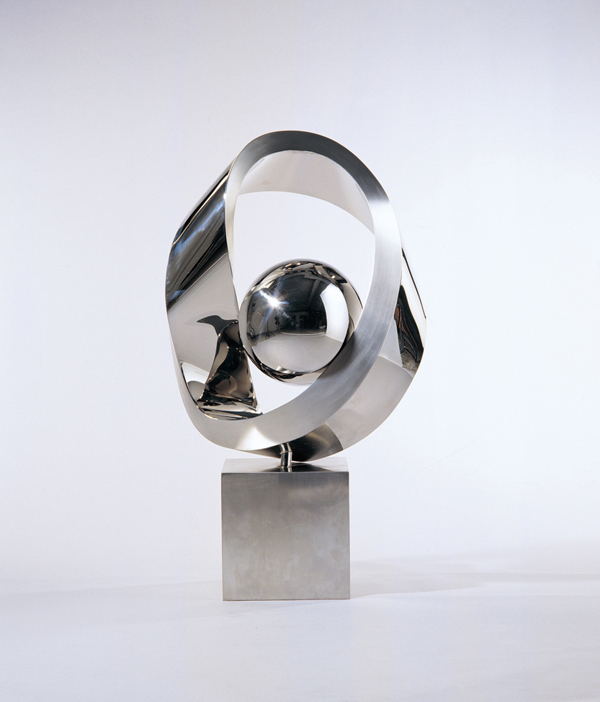|
Evergreen
|
|
1990 Stainless steel, edition no. 19/20 59(L) x 37(W) x 112(H) cm Signed Yuyu Yang Fong in Chinese and English, dated '90,numbered 19/20 |
|
Estimate
1,300,000 - 2,000,000 317,000 - 488,000 40,600 - 62,500
|
|
|
Yuyu Yang, also called Yang Ying-feng, was born in Ilan County, Taiwan in 1926, and died in Hsinchu in 1997. He received his education at the Tokyo Academy of Fine Arts (now National Tokyo University of Art), Fu Jen Catholic University in Peiping (Beijing today) and the Fine Arts Department at National Taiwan Normal University. In the 1960s, he conducted research studies on sculpture at the University of Rome and the National Institute of Design and Mint in Italy. His early works are full of humanistic characteristics and the later ones are a synthesis of elements of abstract Modernism. His famous stainless steel sculptures truly embody Chinese aesthetics.
Master Yang was not only an outstanding sculptor, but also a humanist with a great passion for life, the aesthetics of ecology and Buddhism. This sculpture, "Evergreen" was made in 1990 for the 20th Anniversary of World Earth Day, on April 22nd. The belt circuling the Earth expresses the concept of eternal motion and goes beyond science to reach a philosophical conception of the symbiotic relationship between man and nature in a harmonious universe. It also reflects a passionate concern for environmental protection. He once said, "the belt around the Earth is a life circulation and balance interaction". This sculpture is novel and modern; paradoxically, the stainless steel looks cold and yet conveys warm and kind feelings through its simple and well-executed shape. The eternal motion of the harmonious universe represents a process of transformation involving the interaction of contraries: complexity and simplicity, as well as the part and the whole. The artist's profound life experiences have been internalized as a mature aesthetics. The philosophy of Buddhism and oriental aesthetics are illustrated and further interpreted with the modesty of traditional art that combines an interior quintessence and exterior form.
